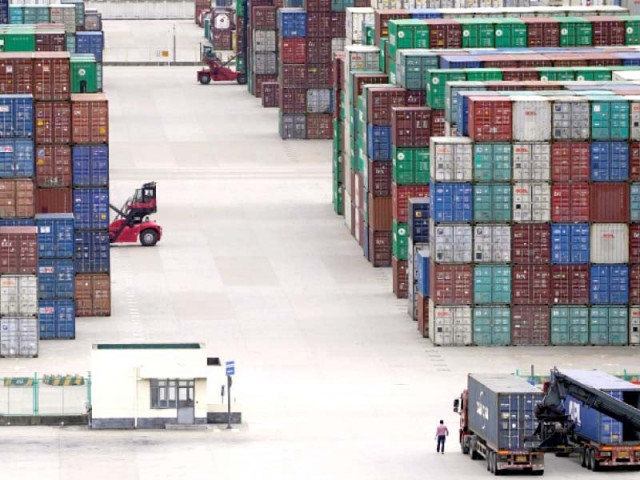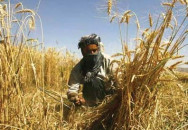Arresting the soaring trade deficit
Steps can be taken to lift output of oil, gas, refined petroleum products to cut imports

The robust increase in exports is often regarded as one of the biggest achievements of the government by different ministers, and rightly so.
But the positive impact of double-digit increase in exports is being offset by the surge in imports.
In fiscal year 2018-19, when the current PTI government came to power, Pakistan recorded exports of $22.96 billion, as per data of the Pakistan Bureau of Statistics (PBS), which depicted a drop of 1.1% from 2017-18.
Exports fell again to $21.39 billion in the following year but climbed to the record high of $25.3 billion in 2020-21.
Now, it seems that exports may rise further to another all-time high of more than $30 billion in the current fiscal year.
For the first seven months of FY22, the PBS has reported exports of $17.67 billion, showing a strong growth of nearly 24% from $14.26 billion in the same period a year earlier.
The seven-month export number translates into an annualised figure of $30.3 billion.
However, if one looks at the import data, the outlook doesn’t appear that rosy anymore. Imports for the first seven months came in at $46.47 billion, depicting a strong growth of 59% year-on-year.
The rise in imports easily outpaced the increase in exports by a wide margin. The ballooning import bill is diminishing the positive impact of increase in exports.
Trade deficit has now climbed to $28.8 billion, nearly twice as large as the deficit of $15 billion reported for the first seven months of previous fiscal year.
Although exports have climbed substantially, when looked at from the lens of net exports (exports minus imports), the situation doesn’t appear good.
The meteoric increase in trade deficit has weighed heavily on the value of Pakistani rupee. Currency devaluation and high energy prices have been one of the primary reasons for inflation, with the Consumer Price Index (CPI) reading coming in at 13% in January 2022 – the highest in two years.
A closer look at the import data reveals that the increase was driven in large part by the double whammy of high commodity prices and their strong demand.
Petroleum group imports increased by 113% in the first six months of the ongoing fiscal year to $10.18 billion from $4.77 billion in the first half of last year.
Demand for energy products like petrol, diesel and LNG rose as business activities climbed. The volumetric imports of petroleum products went up by 29% to 9.2 million tonnes.
It is often argued that the government can’t do anything about the high commodity prices and must spend billions of dollars on buying crude oil and petroleum products.
However, this assumption is a bit misleading and it absolves the government of its responsibility to do whatever it can to bring down the energy import bill.
Policymakers can take measures aimed at lifting domestic production of oil, gas and refined petroleum products, which can bring down Pakistan’s import requirements.
Lack of policy framework
The domestic energy sector – particularly the exploration and production (E&P) industry that extracts hydrocarbons and the oil refining industry that turns crude oil into petrol, diesel and other refined products – has long been neglected by successive governments.
Unlike other sectors such as textile and agriculture, the E&P and oil refining industries have received little support of the government.
There is no policy framework that could encourage growth. As a result, both E&P and oil refining industries have been struggling with weak volumes.
Had these industries been running at optimal levels, they could have reduced the need to import high quantities of crude oil and petroleum products and the country’s import bill might have been lower.
Oil refineries, including companies such as Cnergyico (formerly Byco Petroleum) and Parco, can together process up to 19.4 million tons of crude oil annually. They can satisfy a vast majority of the country’s demand for refined products.
However, the refineries have been operating at low capacity, with utilisation rate of just around 60%. As a result, the domestic production of petrol and diesel has remained low, which forces the country to import expensive fuels.
As for the local oil and gas producers, state-owned OGDCL, the country’s largest E&P company, produced 36,892 barrels of oil and 870 million cubic feet of gas on a daily basis in the previous financial year.
By comparison, 10 years ago, the company’s daily oil and gas production was higher at 37,370 barrels and 1,013 million cubic feet respectively.
Although it is true that the country does not have sufficient oil and gas reserves to meet all of its demand, the performance of the state-backed E&P companies might still have been better if the government had focused on this area.
The government, however, hasn’t run out of time. It can still take steps that can improve the performance of oil refineries and E&P companies and lift domestic oil, gas and refined products’ production.
For example, by introducing new policies that incentivise oil and gas exploration work and expansion of oil refineries, it can encourage growth in this sector.
Oil refineries, in particular, can quickly ramp up petrol and diesel production if policymakers figure out a way to increase furnace oil consumption since the low utilisation rate was primarily due to weak demand for furnace oil.
This can be done, for instance, by linking 10% to 15% of power generation with furnace oil consumption. At the same time, the refineries should be encouraged to modernise their plants and phase out furnace oil from their production profiles.
In short, policymakers need to concentrate on lifting domestic oil, gas and refined products’ production. An increase in output can reduce reliance on imported commodities and help arrest the soaring trade deficit.
The writer focuses on subjects of business and economics, specialising in the energy sector
Published in The Express Tribune, February 21st, 2022.
Like Business on Facebook, follow @TribuneBiz on Twitter to stay informed and join in the conversation.



















COMMENTS
Comments are moderated and generally will be posted if they are on-topic and not abusive.
For more information, please see our Comments FAQ